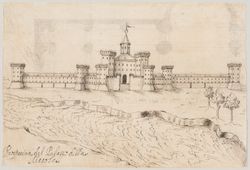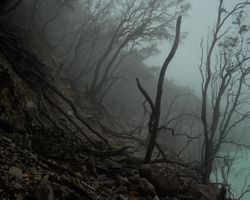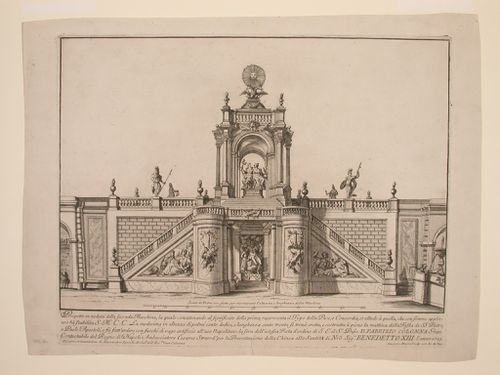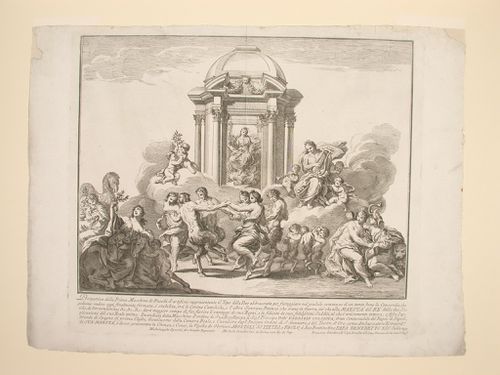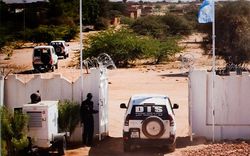textual records
AP075.S1.1989.PR04.008
Description:
Original folder entitled "OTTAWA CITY HALL / WOLD PEACE BELL / CORREPONSPENCE, INFORMATION".
1989
Design development and correspondence for the Ottawa City Hall, Ottawa, Ontario
Actions:
AP075.S1.1989.PR04.008
Description:
Original folder entitled "OTTAWA CITY HALL / WOLD PEACE BELL / CORREPONSPENCE, INFORMATION".
textual records
1989
Project
CI005.S1.1946.PR1
Description:
In order to better coordinate numerous war memorial committees, the Dutch national government instituted a Central Commission for War and Peace Memorials. The commission initiated a national monument project in 1946 with the direction of J. Henrick Muller, who chose Dam Square, Amsterdam, for its site. The existing plan drew on an existing municipal Amsterdam memorial. Sculptor John Raedecker designed a sculpture group supported by an obelisk and Oud was enlisted by Raedecker to create the memorial's spatial design for the sculptures and urns. Oud chose the memorial site opposite the palace in Dam Square. Despite pressure to change the site position, the committee submitted Oud's design and it was approved in 1950. The sculptures and monument were completed in 1956 with an opening ceremony held in May (Taverne et al. 2001, 457-460). Project series includes partial sections and plans showing sculptures by Raedecker.
1946-1956
National Monument, Dam Square, Amsterdam, Netherlands (1946-1956)
Actions:
CI005.S1.1946.PR1
Description:
In order to better coordinate numerous war memorial committees, the Dutch national government instituted a Central Commission for War and Peace Memorials. The commission initiated a national monument project in 1946 with the direction of J. Henrick Muller, who chose Dam Square, Amsterdam, for its site. The existing plan drew on an existing municipal Amsterdam memorial. Sculptor John Raedecker designed a sculpture group supported by an obelisk and Oud was enlisted by Raedecker to create the memorial's spatial design for the sculptures and urns. Oud chose the memorial site opposite the palace in Dam Square. Despite pressure to change the site position, the committee submitted Oud's design and it was approved in 1950. The sculptures and monument were completed in 1956 with an opening ceremony held in May (Taverne et al. 2001, 457-460). Project series includes partial sections and plans showing sculptures by Raedecker.
project
1946-1956
photographs
PH1986:0901:033
Description:
- Qi and Qi reproduce a photograph of the same structures (p. 41) but misidentify the site as Yonghe Gong [Lamasery of Harmony and Peace] (also known as the Lama Temple), which is a Tibetan Buddhist temple complex located in the Inner City, outside the Imperial City.
architecture
29 October 1860
View of a p'ai-lou and a building at the southeast corner of the temple complex of Ta-kao hsuan Hall (now Dagaoxuan Dian) in the Imperial City, Peking (now Beijing), China
Actions:
PH1986:0901:033
Description:
- Qi and Qi reproduce a photograph of the same structures (p. 41) but misidentify the site as Yonghe Gong [Lamasery of Harmony and Peace] (also known as the Lama Temple), which is a Tibetan Buddhist temple complex located in the Inner City, outside the Imperial City.
photographs
29 October 1860
architecture
Luca Danese was an architect and hydraulic engineer active in northeastern Italy in the first half of the 17th century. His career, while rooted in the peculiar geography of the Po River Delta, interacted with and was shaped by the broader hydropolitics of the papal government that was busy transforming Rome’s water infrastructure. Further, it was the period when, with(...)
Study Room Keyword(s):
research fellow 2023, seminar, research, Andrea Bagnato, Luca Danese, Italy, 17th century, hydropolitics, water
6 July, 6 p.m.
Research Fellow Seminar: Andrea Bagnato
Actions:
Description:
Luca Danese was an architect and hydraulic engineer active in northeastern Italy in the first half of the 17th century. His career, while rooted in the peculiar geography of the Po River Delta, interacted with and was shaped by the broader hydropolitics of the papal government that was busy transforming Rome’s water infrastructure. Further, it was the period when, with(...)
Study Room Keyword(s):
research fellow 2023, seminar, research, Andrea Bagnato, Luca Danese, Italy, 17th century, hydropolitics, water
Bas Princen: Volcano Walks
In this artist’s talk, Bas Princen will discuss the current status of the 17 Volcanoes project and explore the resonances between the works of Franz Wilhelm Junghuhn, works by early-twentieth-century Dutch photographers in Java (like van Nieuwenhuis), and his own practice. Although discovering new places seems impossible today, the talk takes as a point of departure the(...)
15 October 2016, 3pm
Bas Princen: Volcano Walks
Actions:
Description:
In this artist’s talk, Bas Princen will discuss the current status of the 17 Volcanoes project and explore the resonances between the works of Franz Wilhelm Junghuhn, works by early-twentieth-century Dutch photographers in Java (like van Nieuwenhuis), and his own practice. Although discovering new places seems impossible today, the talk takes as a point of departure the(...)
DR1988:0437:046
Description:
- This etching for a fireworks construction or macchina is in the form of a temple dedicated to peace. The temple appears to be centrally-planned, consisting of a square lower story crowned by a shallow dome similar to that of the Pantheon except that is roofed with fish-scale shingles. The front façade is in the form of a triumphal arch.
temporary architecture
printed 1773
Etching of Posi's design for the "prima macchina" of 1773
Actions:
DR1988:0437:046
Description:
- This etching for a fireworks construction or macchina is in the form of a temple dedicated to peace. The temple appears to be centrally-planned, consisting of a square lower story crowned by a shallow dome similar to that of the Pantheon except that is roofed with fish-scale shingles. The front façade is in the form of a triumphal arch.
temporary architecture
DR1988:0437:003
Description:
- This etching for a two-storey fireworks construction or macchina is set against the wall of a courtyard. Above the level of the wall the macchina is is a triumphal arch which frames statues of Peace and Concord sitting arm in arm. The top of the arch is crowned with the Hapsburg double-headed eagle and the sun of Apollo.
temporary architecture
printed 1725
Etching of Specchi's design for the "seconda macchina" of 1725
Actions:
DR1988:0437:003
Description:
- This etching for a two-storey fireworks construction or macchina is set against the wall of a courtyard. Above the level of the wall the macchina is is a triumphal arch which frames statues of Peace and Concord sitting arm in arm. The top of the arch is crowned with the Hapsburg double-headed eagle and the sun of Apollo.
temporary architecture
DR1988:0437:015
Description:
- This etching for a fireworks construction or macchina in the form of a small single-storey tempietto is dedicated to peace. The tempietto is raised up on clouds and surrounded by various mythological figures including satyrs, and other animals such as a camel and a horse. The four women at the lower left and lower right might represent the four continents.
temporary architecture
printed 1749
Etching of Specchi's design for the "prima macchina" of 1749
Actions:
DR1988:0437:015
Description:
- This etching for a fireworks construction or macchina in the form of a small single-storey tempietto is dedicated to peace. The tempietto is raised up on clouds and surrounded by various mythological figures including satyrs, and other animals such as a camel and a horse. The four women at the lower left and lower right might represent the four continents.
temporary architecture
articles
The Good Cause
Journeys and translation
Archis, Architecture en uniforme, Architecture in Uniform, Cold War, Guerre froide, La bonne cause, NAi, paix, peace, reconstruction, Seconde Guerre mondiale, Second World War, The Good Cause
28 March 2011
Journeys and translation
textual records
Diverses publications
ARCH257361
Description:
Divers sujets et publications : « The Arts and Culture of Québec » (émission avec Arthur Lismer, Emile Vaillancourt, et John Fisher. Cormier est mentionné); « Canadian Unity and Québec » (interview avec Emile Vaillancourt, John Humphrey, et Hugh MacLennan); extraits des Evangiles de saint Matthieu et Saint Jean; « The Basis of Peace » par Brooke Claxton; « Canada's Support of the Army Overseas » par W.L. Mackenzie King (émission); cours d'aéronautique de Pierre Franck; « Sur la langue Araméenne » (extraits par Robert Aron); des textes médicaux divers par Albéric Marin; une page de notes sur Eric Satie par Cormier; 2 photos de Henri Laugier, physiologiste.
entre 1929 et 1946
Diverses publications
Actions:
ARCH257361
Description:
Divers sujets et publications : « The Arts and Culture of Québec » (émission avec Arthur Lismer, Emile Vaillancourt, et John Fisher. Cormier est mentionné); « Canadian Unity and Québec » (interview avec Emile Vaillancourt, John Humphrey, et Hugh MacLennan); extraits des Evangiles de saint Matthieu et Saint Jean; « The Basis of Peace » par Brooke Claxton; « Canada's Support of the Army Overseas » par W.L. Mackenzie King (émission); cours d'aéronautique de Pierre Franck; « Sur la langue Araméenne » (extraits par Robert Aron); des textes médicaux divers par Albéric Marin; une page de notes sur Eric Satie par Cormier; 2 photos de Henri Laugier, physiologiste.
textual records
entre 1929 et 1946
